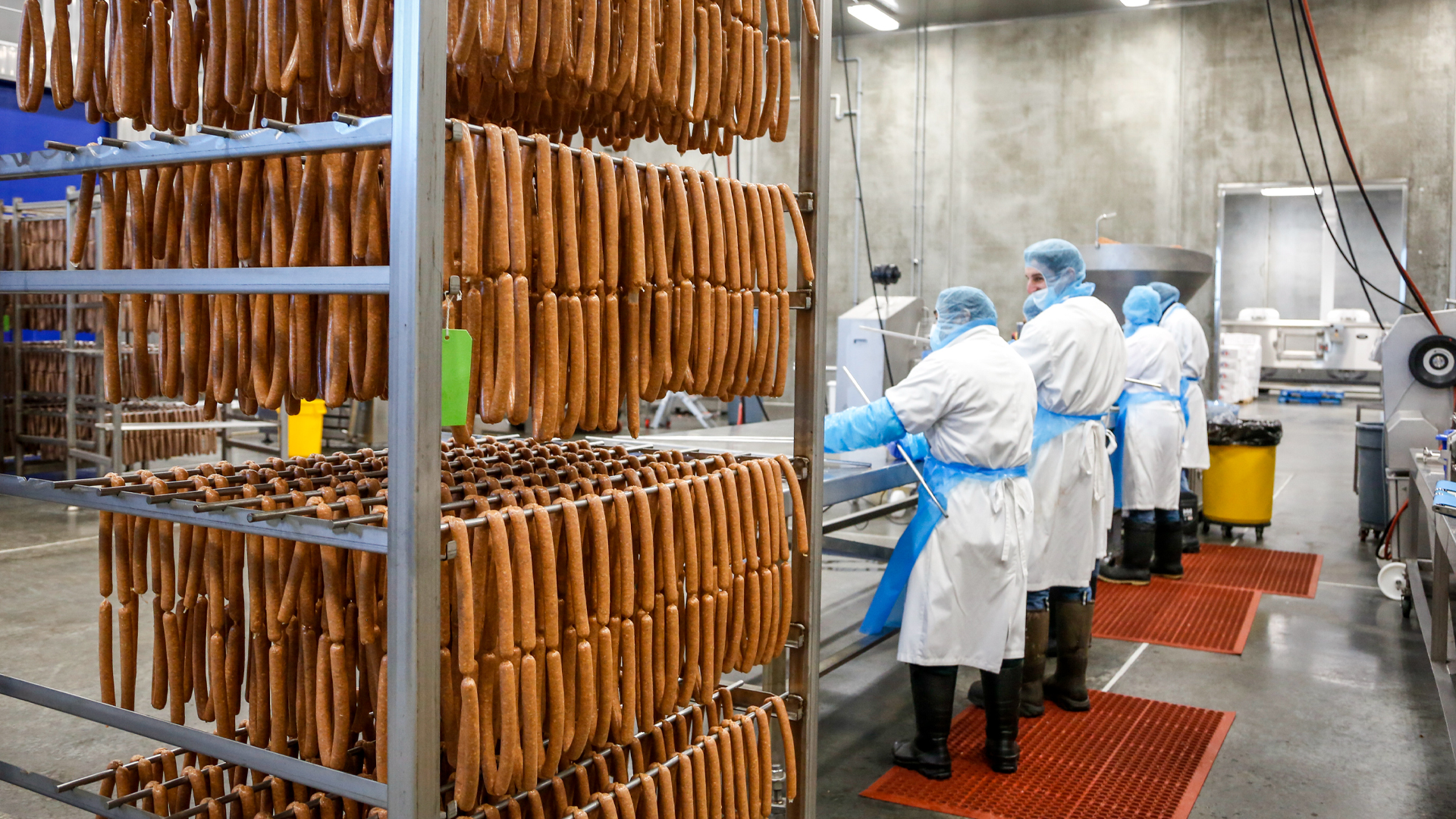The U.S. government’s decision to impose 25-per-cent tariffs on Canadian steel, aluminum and automotive exports is more than a blow to bilateral trade. It’s an economic tremor likely to stun the heartbeat of Canada’s manufacturing sector, which depends heavily on immigrant labour.
Between 2010 and 2021, that manufacturing sector lost 159,000 Canadian-born workers, a gap that was partially filled by 46,000 new and recent immigrants. But as the 2025 edition of U.S. tariffs take effect, or hang like a threat over Canada’s economy, thousands of newcomers who rely on stable factory jobs will feel the shock waves most acutely. Yet the disproportionate risks they face often go untold.
Canada relies on immigrant labour in manufacturing
Contrary to the notion that most newcomers gravitate toward service industry work in large urban centres, Statistics Canada shows that a sizeable share of immigrant workers fill critical gaps in the manufacturing sector.
Over the past decade, immigrants accounted for 84 per cent of the growth in Canada’s labour force. From automotive assembly lines in Windsor to steel mills in Hamilton, immigrants often provide the workforce flexibility that is crucial for industries that must constantly respond to fluctuating market conditions.
While these manufacturing jobs generally offer moderate wages that provide newcomers with a foothold in their new country, existing and impending tariffs on steel and aluminum threaten to undercut manufacturers’ competitiveness by driving up production costs. When companies lose sales or need to reduce their output, the first layoffs usually impact the most recent hires: immigrants who, despite their contributions, lack seniority, substantial savings, and comprehensive safety nets.
Immigrants’ overrepresentation, low savings, high stakes
Newcomers to Canada are, on average, more educated than ever before. But a persistent issue over credential recognition often prevents many from securing positions that match their skill levels. The outcome? A substantial number end up in low-skill or labour-intensive factory jobs — roles that are particularly vulnerable during economic shocks.
When tariffs start to squeeze manufacturers, knee-jerk responses often include layoffs or reduced hours. Many newcomers have limited social capital to fall back on. They might not immediately qualify for Employment Insurance, and they have less access to support networks that help people find new work. For visible-minority immigrants who already have lower employment incomes, a sudden loss in wages can quickly spiral into financial freefall, forcing entire families into precarious living conditions.
The inflationary domino effect
Canada’s cost-of-living crunch adds another layer of difficulty. Inflation has surged in recent years, driving up food and housing costs. For immigrants existing on modest wages, even a small dip in pay can trigger a debt cycle, especially if layoffs persist.
Meanwhile, as tariffs make Canadian steel and aluminum exports more expensive for U.S. buyers, manufacturers have to either raise prices or take steps to reduce operating costs. Neither option bodes well for wage stability or new hiring. Again, the bulk of this burden lands disproportionately on newcomers, particularly those still struggling to build a financial foothold in Canada.
Lessons from the pandemic
We saw a similar pattern of impact disparity during COVID-19. When the pandemic shuttered factories, immigrants and racialized workers were frequently the first to lose their paycheques and the last to benefit from an economic rebound, further illustrating how external shocks expose inequalities in Canada’s labour market.
During his first term in 2018, President Donald Trump imposed tariffs of 25 per cent on Canadian steel products and 10 per cent on aluminum, prompting Ottawa to respond with reciprocal measures. Although both governments eventually lifted their respective duties, the initial penalties caused lingering damage in reversing the previous growth in Canada’s exports.
And now Trump’s 2025 version of tariffs, or threats of them, introduces fresh uncertainty for industries still emerging from pandemic-related disruptions. According to survey findings released by the Canadian Manufacturers & Exporters, nearly 90 per cent of Canadian manufacturers could face significant or severe repercussions if the U.S. goes ahead with announced tariffs on imports from Canada. Such a scenario could be devastating to a sector that accounts for 10 per cent of Canada’s GDP, employs 1.8 million people, and produces more than 60 per cent of the country’s exported goods.
Why this matters for all Canadians
It’s tempting to see the U.S. import charges as yet another trade dispute, but the America First Trade Policy philosophy that drives them ignores the significance of just how integrated North American supply chains truly are.
Canada and the U.S are each other’s largest trading partners, and their respective manufacturing of exports — particularly in autos and metals — underpins tens of thousands of jobs on both sides of the border. Even a modest drop in output, or “minor” layoffs, will trickle down to bring pain for local businesses, housing markets, and community services.
Visible minorities have difficulty accessing the labour market
Work skills must be central to Canadian immigration efforts
The startling impact of COVID-19 on immigrant women in the workforce
There is also an ethical dimension: Immigrants who arrived seeking stable, dignified work now risk becoming collateral damage of a policy they had no hand in shaping. Reducing this issue to a mere geopolitical quarrel demeans the plight of workers whose very livelihoods are at stake, especially those already struggling to navigate through social and economic barriers.
Charting a path forward
Addressing these challenges requires a co-ordinated response from federal and provincial governments, industry leaders and community stakeholders. There are immediate and long-term strategies that can protect the livelihoods of immigrant workers while also strengthening Canada’s manufacturing resilience. The following steps merit urgent consideration:
- Immediate bridging programs: Federal and provincial governments must strengthen transitional income supports for factory workers displaced by tariffs. Temporary wage top-ups or retraining grants could help many pivot to other roles when downturns hit.
- Targeted job retraining: Investments in vocational programs that develop skills for growth sectors can mitigate job losses. Provincial bodies such as Ontario’s Ministry of Labour, Training and Skills Development need to ensure these pathways are accessible to newcomers with language or credential hurdles.
- Industry-led inclusion initiatives: Major manufacturers can develop inclusive hiring and retention policies that prioritize job security for vulnerable workers. This might include seniority systems that account for labour-market inequities, or mentorship programs for newly arrived workers.
- Comprehensive data collection: Federal and provincial governments should compile data that shows how factors of race and immigration status define the workforce in sectors hardest hit by tariffs. Revealing evidence of how external shocks hit immigrants the hardest could guide policymakers in crafting solutions for reducing these disparities.
A call to protect our most vulnerable workforce
Even as Canada adopts retaliatory measures to counter the Trump administration’s protectionism and works to remove internal barriers that hinder interprovincial commerce, trade volatility still threatens to overwhelm those with the fewest resources. As Washington’s tariffs undercut manufacturing stability, policymakers, industry leaders and community advocates must ensure that the immigrant workers powering our factories remain protected.
This issue goes beyond preserving trade. It’s about safeguarding the very people who have kept Canada’s manufacturing sector competitive and dynamic. By confronting these vulnerabilities head-on, we can create a more resilient labour force and guarantee that Canada’s economic recovery leaves no one behind.









